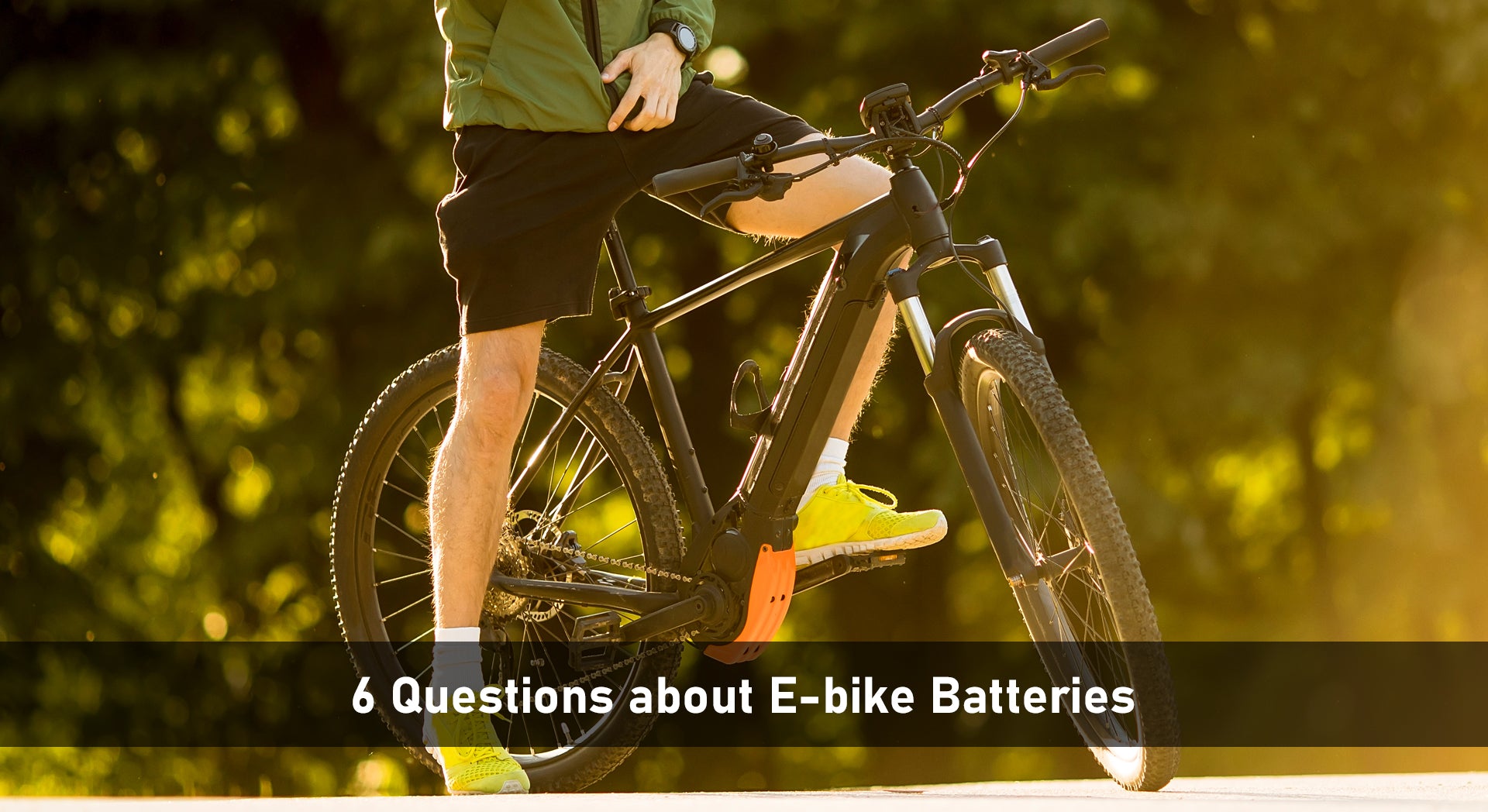The pedelec relies on its battery as the primary source of power, delivering the necessary electrical energy to the motor for providing assistance during cycling. Unsurprisingly, much dialogue and expert discourse revolve around the eBike's battery. What sets various batteries apart? How extensive is the travel range on a completely charged battery? And what precautions should be taken in terms of storage? YOSEPOWER experts are here to provide you with information and advice.
- What sets lithium batteries apart?
Among various battery types, lithium batteries exhibit distinctive features. Firstly, their high energy density enables the storage of more energy in the same volume and weight, delivering superior endurance for mobile devices and electric vehicles. Secondly, their lightweight design makes them more compact, making lithium batteries the top choice for weight-sensitive applications. Notably, lithium batteries boast a low self-discharge rate, maintaining the charge state for an extended period, thereby prolonging device standby time. Additionally, they are immune to memory effects, eliminating the need to wait for a complete discharge before recharging and contributing to the overall lifespan of the battery. YOSEPOWER exclusively employs lithium-ion technology in all its electric bicycle batteries, combining a lightweight structure with high energy density.
- How long does it take to charge a battery?
The charging time is influenced by both the battery capacity and the power of the charger. Using a standard battery charger, Hailong 36V17.4Ah requires approximately 6 hours to reach a full charge from complete depletion, while Hailong 36V20Ah takes about 7 hours, and Hailong 48V15Ah approximately 8 hours. Nevertheless, the actual charging time may experience variations due to factors like temperature fluctuations.
3.How far can you travel on one battery?
For numerous electric bike enthusiasts, thisquestion is pivotal, yet there exists no universally applicable response. The range can vary significantly, spanning from under 20 to well beyond 100 kilometers on a single battery charge.
4.How can you influence the service life?
When it comes to maintaining batteries, there are several crucial considerations to bear in mind. First and foremost, avoiding both overcharging and over-discharging is paramount. Striving to prevent the battery from reaching complete depletion or excessive charging is key to effectively extending its lifespan. Equally important is practicing moderate charging, steering clear of frequent deep charging and discharging cycles. Maintaining the battery at a moderate charge level helps to slow down capacity degradation. Temperature control is also critical—avoid using or charging the battery in extreme temperatures. During storage, selecting an appropriate temperature environment is essential. Storing the battery in a dry setting and protecting it from direct sunlight within temperatures ranging from approximately 10°C to 20°C is recommended. Ideally, charge the battery at room temperature and maintain the ideal charging level between 30% and 60%. Lastly, when transporting an electric bicycle, it's crucial to remove the battery from the bike and securely store it inside the vehicle. These comprehensive maintenance measures contribute to ensuring the battery's optimal performance and longevity, providing the best protection during both everyday use and storage.
5.How to safeguard the battery in winter?
During the winter season, adopting a set of measures can effectively shield the battery from the impact of unfavorable weather conditions. Firstly, it's advisable to refrain from using the electric bicycle in extremely cold environments. Optimal practice involves parking the vehicle indoors in a warm space to prevent the harsh temperatures from adversely affecting the battery's performance. Secondly, during cold weather starts, a gradual acceleration approach is recommended to avoid abrupt and forceful movements, thereby reducing the battery's load and contributing to the preservation of its normal operating state. Additionally, in extremely cold conditions, consider employing specially designed insulation covers for the battery to provide thermal protection. This helps in maintaining the battery's performance and lifespan in cold weather. The comprehensive application of these measures ensures the battery sustains optimal performance throughout the winter season.
6.What should be considered when cleaning the battery?
When cleaning the electric bicycle battery, attention to the following aspects is crucial to ensure a safe cleaning process and maintain battery performance. Firstly, it is imperative to disconnect the battery from the electric bike and turn off the electric bike's power switch to prevent electrical short circuits or other unforeseen accidents. Secondly, avoid using high-pressure washers or spraying water directly onto the battery to prevent water from penetrating the battery casing, causing circuit shorts or damaging the battery. It is preferable to use a damp cloth to gently wipe the battery surface, removing dust, mud, and dirt while minimizing the risk of liquid infiltration. Avoid using strong acids, alkalis, or other chemical cleansers to prevent adverse effects on the battery casing and management system. Carefully handle the cleaning process to avoid impacting the battery; protecting the casing contributes to ensuring battery safety and stability. Conduct cleaning in a well-ventilated area to facilitate rapid moisture evaporation, reducing the potential for moisture-related battery issues. After cleaning, thoroughly inspect the battery's appearance, ensuring that the connection wires and casing are not loose, damaged, or harboring foreign residue. Address any abnormalities promptly. Additionally, it is advisable to consult the electric bicycle user manual, adhering to the manufacturer's specific recommendations and precautions for battery cleaning. Implementing these measures comprehensively ensures that the electric bicycle battery maintenance not only enhances its appearance but also guarantees safety and performance.
For additional insights into e-bikes, kindly visit our NEWS page. With 11 years of expertise in crafting e-bike batteries, YOSE POWER stands as a trusted industry leader. We merit the confidence of consumers, and we invite you to experience the exceptional quality that defines YOSEPOWER. Give us the opportunity to impress you with our commitment to excellence.
Go here: https://yosepower.com/?ref=FROMLILY


Share:
Exploring the Versatility of E-Bikes
The 7 Secrets to Master Rainy Day E-Biking